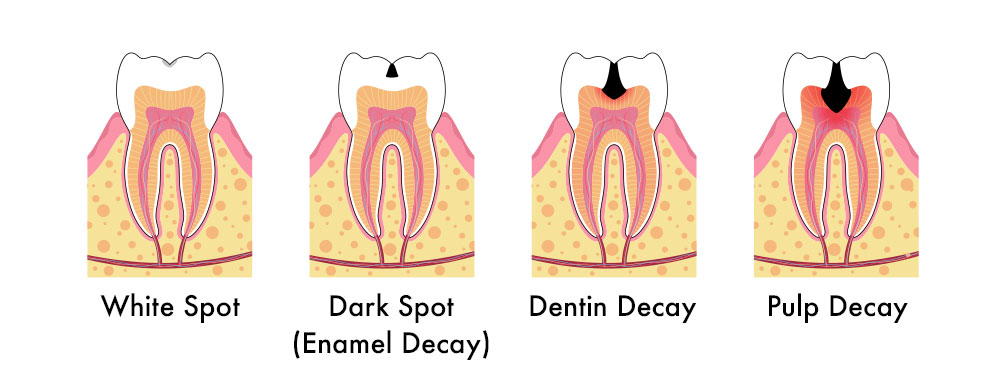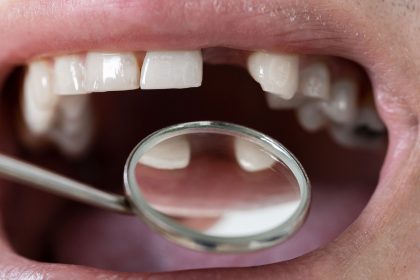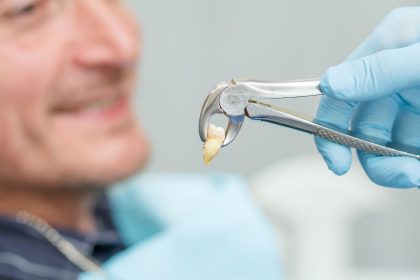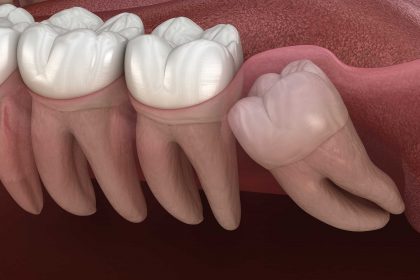Cavities are one of the most common medical conditions, affecting more than 90% of people. In fact, it is estimated that more than one in four adults currently have untreated cavities — and many of them aren’t even away of it! So how can you tell if you have a cavity?
The most obvious sign of a cavity is a hole in your tooth, but this is not always evident. Other symptoms include tooth pain or sensitivity to temperature or sweets. White, brown, or black spots on the teeth can be indicators, as can persistent bad breath and swollen or bleeding gums. Yuck.
Cavities can also have no symptoms at all, especially in the early stages of tooth decay. And some of the visible signs — the holes or the discoloration — can be hidden between teeth or even beneath the gums. So the best way to spot cavities is with regular visits to the dentist.
Catching cavities early is important

Early identification and treatment is easier, less painful, less expensive, and better for the long-term health of your teeth. In their early stages, potential cavities can be treated with non-invasive remineralization. Small cavities in the enamel of a tooth can be fixed with simple fillings in this non-living tissue.
But when cavities progress into the dentin of the tooth — or worse yet, the pulp — fillings have to be much bigger. Sometimes the structural integrity of the tooth is damaged, necessitating an expensive crown rather than a filling. In more extreme cases, you’ll need a root canal or even a complete extraction of the tooth, followed by an implant or a bridge.
None of that is fun. Or inexpensive. So catch and treat the cavities early by watching out for symptoms and visiting your dentist often.
Cavity symptoms
Children, teens, and older adults are most prone to cavities, but cavities can affect anyone, especially when oral health is neglected. Here’s what to look for:
Tooth pain or sensitivity
Any tooth pain is a cause for concern, whether it’s a dull, throbbing pain, a sharp pain with a sudden onset, or a pain that occurs when you bite down. Not every pain indicates that you have a cavity, but wouldn’t it be nice not to have any pain at all? See your dentist to get it taken care of before it gets worse.
Sensitivity is sometimes painful, but sometimes it’s something less — more of a heightened sensation triggered by certain inputs. If you feel localized sensitivity or tooth pain when you eat or drink something cold, hot, or sugary, you might have a cavity. See your dentist.
Discoloration
If you notice one or more bright white spots on a tooth, you’re in luck: You may have just spotted the first sign of demineralization before a cavity forms. At this point, your tooth can still be treated to prevent the cavity. You’ll need to step up your oral hygiene game, and it would be a good idea to visit your dentist for a topical remineralization treatment.
If the spots have changed from white to brown or black, then a cavity has probably already begun to form beneath the surface of the tooth. Make an appointment to see your dentist as soon as possible. If you’re lucky, you’ll catch this while the cavity is still localized within the enamel of the tooth.
Bad breath or a weird taste
We all get bad breath every once in a while. That’s just the byproduct of a really enjoyable meal. But if your bad breath is persistent, and especially if it’s accompanied by a strange, possibly coppery taste, that could be a sign of advanced tooth decay. Seek treatment from your dentist as soon as possible — for your own sake and for the sake of those close to your breath.
Bleeding or swollen gums
Bleeding or swollen gums could be a sign of tooth decay or gum disease. Either way, it’s not a good situation for your mouth. Make an appointment with your dentist to get a good overview of any problem areas and to set up a treatment and oral hygiene plan.
Holes or pits in the teeth
Holes or pits are pretty obvious signs. If you see a cavity, you’ve got a cavity. Unfortunately cavities can start in areas that you can’t see with your eyes or even feel with your tongue, such as the tight space between teeth or beneath the gums. Your dentist will be able to identify these hidden cavities pretty easily, though.
Exudate (aka pus)
This is never a good sign. When tooth decay progresses into the pulp and root of a tooth, infection can form an abscess affecting the tooth structure and surrounding soft tissue. At this point there’s a good chance you’re already in a lot of pain. It’s also a dangerous condition requiring urgent medical attention. See your dentist immediately!
No symptoms at all
And sometimes cavities just happen without any obvious symptoms. That’s why regular checkups, professional cleanings, and good oral health habits are so important. Brush your teeth at least twice a day, floss daily, go easy on the sweets, and see your dentist every six months. That’s a pretty good plan for avoiding cavities, or at least identifying them before they become serious problems.
Can these symptoms be signs of anything other than a cavity?
Yes! Many of these symptoms can be a sign of something else. A toothache, for example, could be caused by a sinus infection. Discoloration could be caused by your coffee habit. Bad breath? Blame it on the garlic. Pain when you chew? You might have a cracked tooth. See a dentist!
I know you’re probably tired of hearing me say this, but regular visits to your dentist are the best way to catch and diagnose minor problems — and to fix them before they become major!




